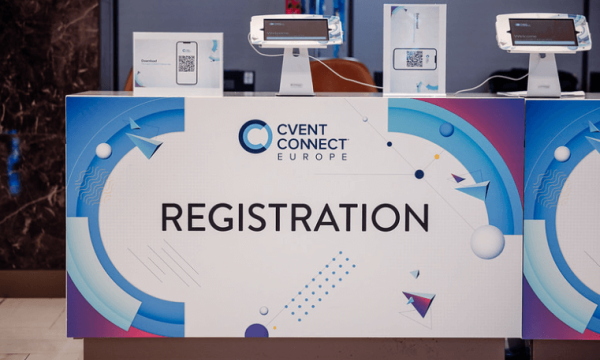Planning a webinar? Look no further. Whether you're a seasoned pro or a newbie, this guide will help you navigate the ups and downs and create a webinar that will leave a lasting impression on your attendees. So, let's get started.
What is a Webinar?
A webinar is short for a web-based seminar. It's a live video conference that connects the host and participants through the internet.
Webinars include features such as polling, live Q&A sessions, screen sharing, and breakout rooms for group discussions. These interactive features allow for a more engaging and immersive experience for the audience, making webinars a popular tool for businesses and organizations to communicate with their clients, employees, or members.
Webinars are used for various purposes, including product demonstrations, training sessions, company updates, or educational seminars. They can reach a large audience without the need for physical travel, making them a cost-effective and convenient way to connect and share information.
Features of a Webinar
Webinars have a range of features that make them an effective tool for communicating with an audience. These features include:
Live Video Conferencing: It brings your presentation to life with real-time, live video conferencing between you and the audience, regardless of location.
Screen Sharing: You can easily share your screen to display presentations, slides, and other multimedia content during the webinar.
Interactivity: Webinars allow for real-time interaction between you and the audience through interactive features such as Q&A sessions, live polling, and chat functionality.
Resource Sharing: You can share various types of resource material, such as presentations, documents, and videos, with the audience during the webinar.
On-Demand Access: Webinars can also be recorded and made available for on-demand viewing, making it possible for individuals who couldn't attend the live session to catch up later.
With these features, a webinar is like a physical experience, fully immersive and interactive from start to finish.
Webinar Planning: A Step-by-Step Guide
Planning a successful webinar meeting requires careful consideration of various elements, such as selecting a topic, determining the target audience, and setting a date and time. To ensure that you cover all the necessary steps, here is a step-by-step guide to webinar planning.
Step 1: Define Your Objectives
It's important to clearly define the purpose of your webinar and what outcomes you hope to achieve. Some common objectives include generating leads, educating your audience, building brand awareness, or simply providing value to your attendees.
By defining your goals, you can align the content and format of your webinar to effectively achieve these objectives, ensuring that your event is both meaningful and impactful.
For example, suppose your objective is to generate leads. In that case, create a sales-oriented presentation highlighting your product or service and providing a clear call to action for attendees to take the next step.
On the other hand, if your objective is to educate your audience, you should structure your webinar as a workshop or seminar where attendees can learn new skills or gain knowledge on a particular subject.
Step 2: Choose Your Topic and Speaker
Your webinar topic is the cornerstone of its success, and choosing a subject that resonates with your target audience is essential. It could be a timely issue, a trending topic, or a subject that addresses a common pain point or challenge faced by your audience.
It's essential to consider the interests and needs of your target audience and choose a topic that will not only engage them but also align with your defined objectives. Once you finalize the topic, select a speaker.
It's important to choose someone knowledgeable and who can engage and deliver the content in an accessible and entertaining way. You could pick an internal expert, a customer, or an industry thought leader. But always consider the speaker's experience, presentation skills, and expertise in the subject matter when selecting.
Also, the speaker should feel comfortable and confident with the webinar technology you choose. Having the right speaker enhances the webinar's content and helps establish credibility and build trust with your audience.
Step 3: Determine the Date and Time
When planning your webinar, it's crucial to consider your target audience's time zone and choose a date and time that is convenient for them. According to research, webinars on Tuesdays, Wednesdays, and Thursdays tend to have the highest attendance rates. Additionally, scheduling your webinar during business hours (10 am to 4 pm) can increase your chances of reaching a larger audience.
It's also important to consider other factors such as holidays, workdays, and peak business hours. For example, scheduling a webinar during a busy workweek or a national holiday may not be the best choice, as it can be challenging for your audience to find the time to attend. On the other hand, scheduling a webinar during a slow business period can result in low attendance and reduced engagement.
To ensure maximum participation, consider sending out a survey to your target audience to gauge their availability and preferred date and time for the webinar. It can help you select a date and time that works for most of your audience and maximize attendance.
Step 4: Select a Webinar Platform
When it comes to hosting a webinar, choosing the right platform is crucial. Many webinar platforms are available, each with its features and capabilities. When selecting a solution, consider the following factors:
Budget: Choose a platform that fits your budget and offers the features you need to run a successful webinar. You can also opt for a free webinar platform if you have to pinch pennies.
Ease of Use: Select a user-friendly and easy-to-use platform for you and your attendees to navigate. It will help minimize technical issues and ensure a smooth and seamless experience for everyone involved.
Features: Consider the features offered by each platform, such as screen sharing, recording options, and interactive elements such as polls and Q&A sessions. Choose a platform with the features you need to deliver an effective and engaging webinar.
Support: Look for a platform that offers robust customer support, including live chat and email support, to ensure that you have access to assistance if you encounter any issues during the webinar.
Step 5: Promote Your Webinar
Promote your webinar to your target audience effectively to achieve a high turnout. There are several tactics you can use to do this, including:
Email: Send out emails to your mailing list, including information about the webinar and a clear call-to-action to register. The frequency of emails will depend on the specific goals and timeline of the event. However, here are some general guidelines for email frequency:
Initial Announcement: Send the initial announcement email 4-6 weeks before the webinar to give enough time for attendees to mark their calendars and make arrangements to attend.
Follow-Up Emails: Follow up with additional emails 2-3 times a week leading up to the webinar. These emails can provide additional information about the speaker, the topic, or any updates related to the event.
Reminder Emails: Send reminder emails 2-3 days before the webinar and the day of the event to make sure attendees don't forget about the event and are able to attend.
Post-Webinar Email: After the webinar, send a follow-up email to thank attendees for their participation and provide any additional resources or next steps related to the topic.
Social Media: Utilize your social media channels to promote your webinar, including posts on Facebook, Twitter, LinkedIn, and Instagram. You can also consider paid social media advertising to reach a wider audience.
Paid Advertising: Utilize paid advertising options such as Google Ads, Facebook Ads, and LinkedIn Ads to reach your target audience and drive registrations.
Partner Promotions: Reach out to partners, suppliers, and industry associations to see if they would be interested in promoting the webinar to their networks.
Website: Promote your webinar on your website, including a clear call-to-action and information about the event.
Read our webinar invitation guide for more.
Step 6: Prepare Your Content
The content of your webinar is what your audience will be tuning in for, so it's essential to prepare it carefully. Here are some tips to help you create engaging and compelling content:
Use Visual Aids: Incorporate slides, videos, and other visual aids into your presentation to keep your audience engaged and interested.
Encourage Interaction: Consider incorporating interactive elements such as polls and Q&A sessions to encourage participation and interaction from your audience.
Plan Your Presentation: Make sure to plan your presentation. Pay special attention to its structure, flow, and key points you want to cover to ensure a smooth and well-organized session.
Rehearse: Rehearse your presentation to ensure you are comfortable with the content, can deliver it smoothly, and do not run overtime. It will minimize nerves and ensure you deliver the best possible presentation.
Step 7: Rehearse Your Webinar
Talking about rehearsing, test your webinar technology before the event day to minimize the risk of technical issues and deliver a smooth and professional presentation. Here are some best practices to keep in mind:
Test Your Setup: Run a few dry runs to test your setup and make sure everything is working correctly. This includes testing your audio and video, internet connection, and platform functionality.
Familiarize Yourself with the Platform: Take some time to familiarize yourself with the platform you are using for the webinar, including its features and tools.
Make Necessary Adjustments: Use the dry runs to make any necessary adjustments to your content or presentation style. It will ensure that your presentation is polished and relevant.
Plan for Technical Difficulties: Have a backup plan in case of technical difficulties, such as a backup audio source or access to a secondary device.
Step 8: Host the Webinar
The day of your webinar is a big moment, and it's necessary to be well-prepared and focused. Here are some tips to help you deliver an exciting and successful webinar:
Arrive Early: Arrive early to give yourself plenty of time to set up and make final preparations. It will ensure you are relaxed and ready to deliver an engaging presentation.
Start on Time: Start your webinar on time and ensure your attendees know the schedule to show professionalism and respect for your audience's time.
Be Engaging: Engage with your audience by using a friendly tone, making eye contact, and encouraging participation. Consider incorporating humor or other engaging elements to keep your audience interested.
Follow-Up: After the webinar, follow up with attendees to thank them for participating. You can also use this opportunity to gather feedback and improve future webinars.
Conclusion
In conclusion, planning a webinar can be a rewarding experience. From defining your objectives, selecting the right topic to promote your event, and delivering an engaging presentation, every step is important in creating a successful webinar. By following these tips, you'll be well on your way to hosting an event that engages and inspires your target audience.
Remember, the key to success is preparation and flexibility. Stay organized, be open to feedback, and most of all, have fun! The goal is to create an event that provides valuable information to your attendees and helps you achieve your business objectives. So, what are you waiting for? Start planning your next webinar today.
Good luck!









